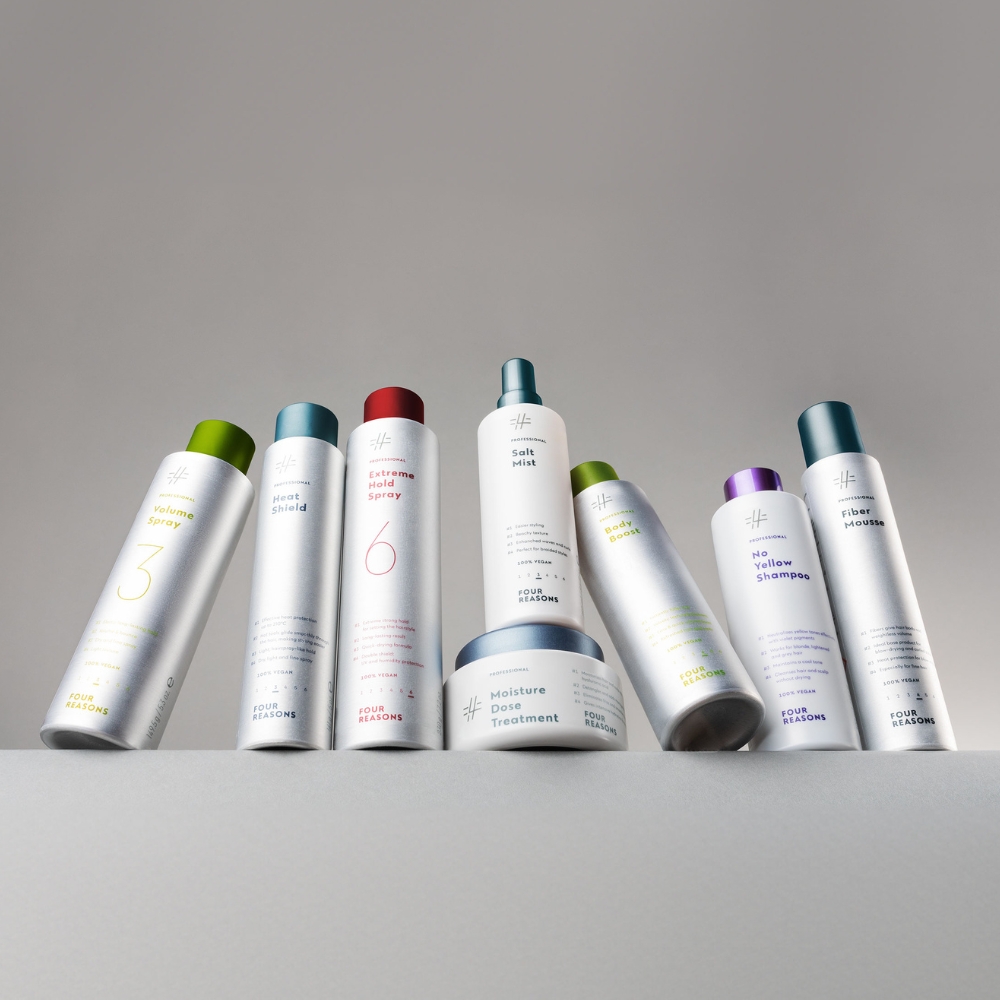The “new normal” of professional stylists – how the COVID-19 pandemic affected hair salons in Finland
The global COVID-19 pandemic hit Finland in March 2020, causing an unprecedented state of emergency in our country as well as significant damage to people’s health and the economy. The service industries suffered the heaviest and fastest effects of the virus. In the spring, the Finnish government aimed to prevent the spread of the COVID-19 pandemic by issuing restrictions that would turn out to have a vast impact on the salon business.
According to our survey conducted in June, the virus and the resulting restrictions closed down salons and financially impaired stylists across Finland. However, the majority of stylists were able to see some positive elements in the crisis; they reported an improved level of hygiene at salons as well as an accelerated digitalization process. While respondents are increasingly worried about their own well-being and finances, they remain hopeful for the future of the salon industry.
Salons tough it out while customer numbers drop
At salons, the COVID-19 restrictions emptied the booking systems. In the survey, about 50% of the stylists reported that their flow of customers had either severely diminished or completely dried up. One in five salons reported that the pandemic had little to no effect on their customer volumes.
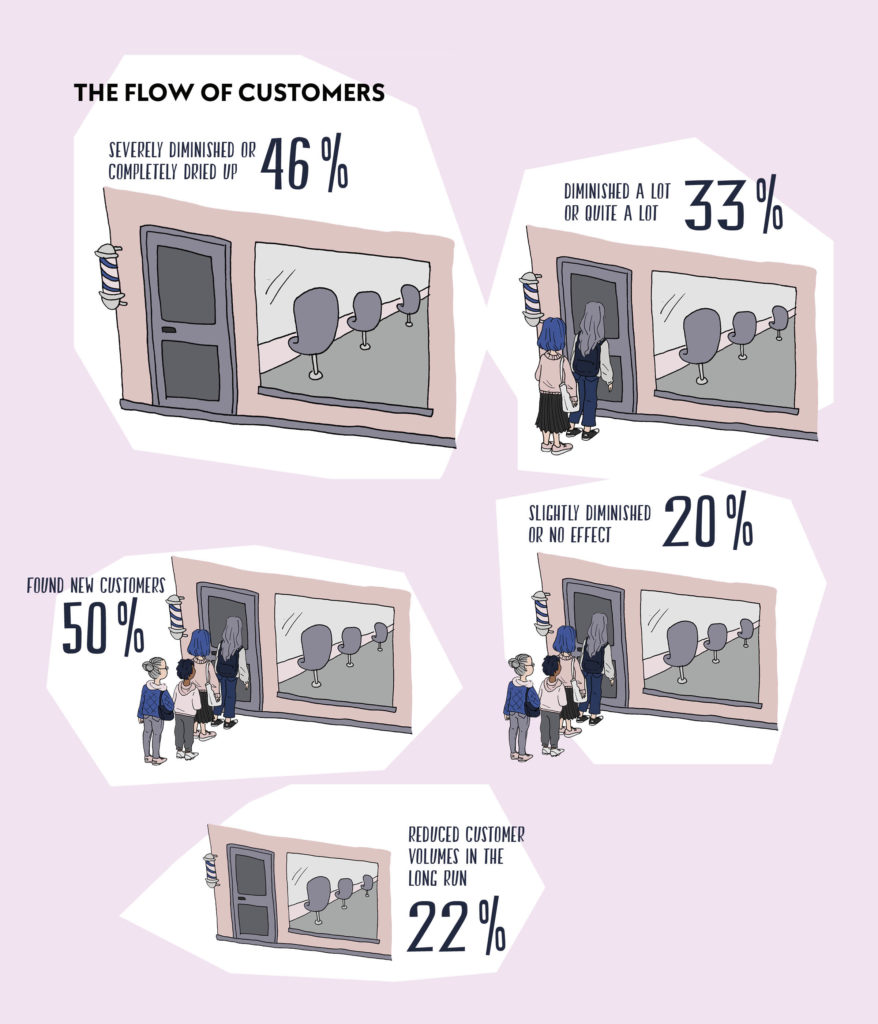
Regardless of the drop in patronage, salons persevered through the crisis; only one in five salons closed their doors during the pandemic. About half of the closed salons made the decision in order to protect the health of their customers or employees. One third of the closed salons stated finances as their reason for shutting down. By mid-June, however, nearly all of the salons had reopened; only 2% remained closed, reporting their inability to continue their business operations.
Very few salons, only about one in ten, survived the COVID-19 crisis without financial losses. About half of the stylists reported minor financial impact, whereas the other half reported more negative results. The various forms of support offered to small-scale business owners were an obvious relief; more than 70% of the respondents reported receiving some form of financial aid. Every other salon received public aid, usually from their own municipality.

New hygienic standards become a permanent feature
How did the salons manage to survive the pandemic without closing down? By improving their safety and hygiene practices. All the respondents reported making at least some changes to their safety and hygiene arrangements. Nearly all salons have started a policy of sanitizing hands and surfaces before the next customer sits in the chair. However, the use of masks has not yet become standard procedure at salons in Finland; about one in three salons reported starting a mask policy with their employees, and about one in ten require their customers to wear masks.
Resourceful stylists also came up with other ideas to keep their business running without risking the health of their employees or customers. Nearly 50% of the respondents offered private appointments to customers in the risk groups. Of the respondents, 28% reported reducing the number of stylists working at the same time if the salon employed several stylists. The same number of respondents increased the safety period between customers. It looks like improved hygiene awareness has become one of the positive consequences of the COVID-19 crisis in salons.
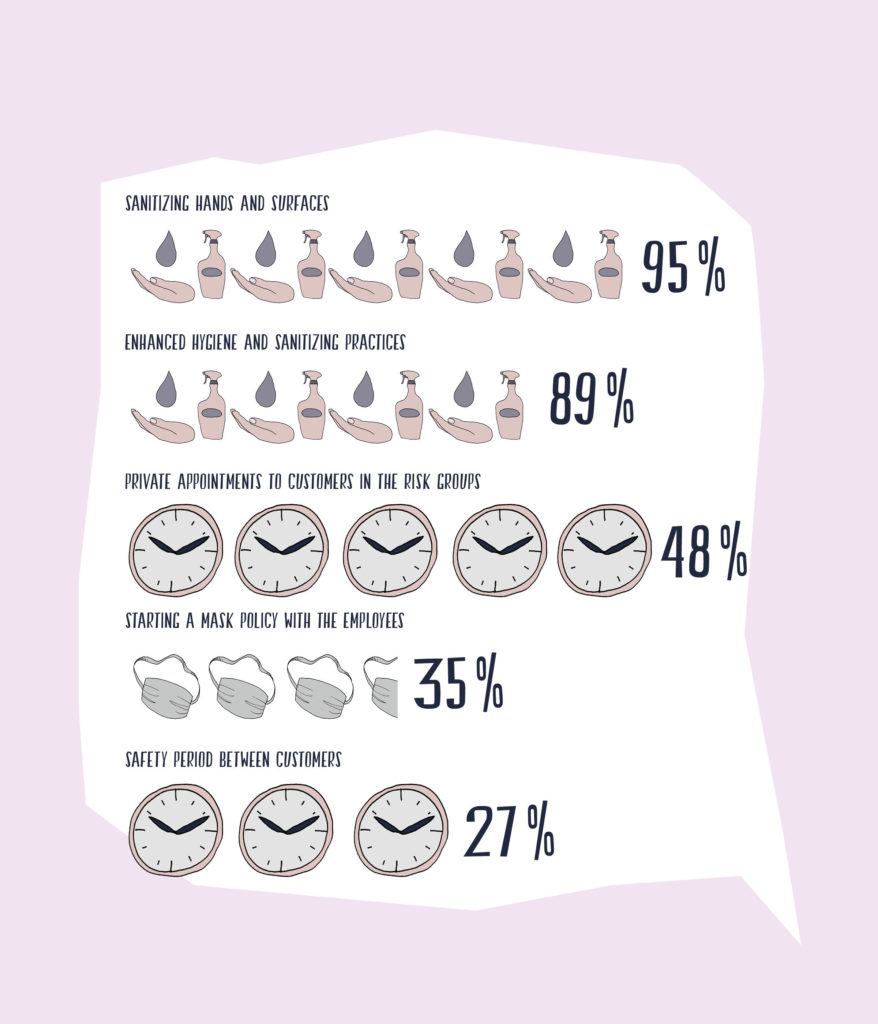
Abundant selection of e-training services boosts the digital progress of stylists
The crisis also seems to have had a positive impact on the hairstyling industry in the form of accelerated digitalization. Three out of four respondents reported increasing the use of a digital service during the crisis. About 50% of the respondents had used training webinars and videos. Four Reasons customers were particularly active in using e-training (66%). This is probably due to Four Reasons’ decision to offer its entire range of e-training for stylists free of charge throughout the spring and summer.
Four Reasons customers also proved to be more active users of digital services overall during the crisis. Nearly half (46%) of Four Reasons customers increased their social media marketing (others 35%) and a third (35%) increased their online purchases (others 20%). The “webshop for stylists” launched by Four Reasons at the start of the government restrictions enabled 13% of its customers to increase their product sales by means of e-commerce (others 8%).
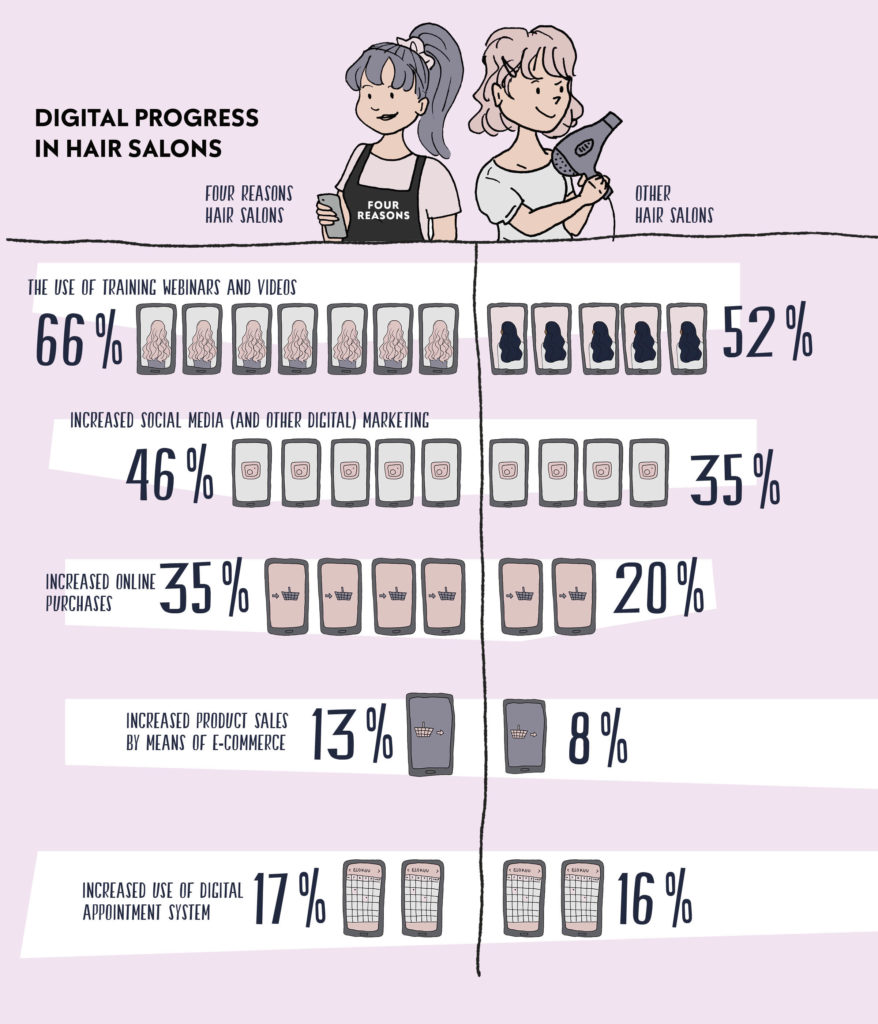
Hope for the future despite concern over well-being and finances
Despite their financial losses, nearly all stylists have also found a positive side to the crisis. As many as half of the respondents reported finding new customers, and nearly one in five increased their customer volumes after the worst of the crisis had passed. Of all the respondents, 42% also stated that their relationship with their existing customers had grown deeper. One in five reported using their time during the crisis for developing their business operations.
Nearly 50% of the respondents are concerned about the future of their salon. One third are worried about diminishing mental well-being or finances and/or the postponement of future investments. One in five predict that their customer volumes will have been reduced in the long run as a result of the COVID-19 pandemic, whereas about 13% believe they have lost some of their regular customers. Relatively few respondents (7%) in the hairstyling industry fear unemployment. Those with the least experience in the industry have the bleakest views of their future.
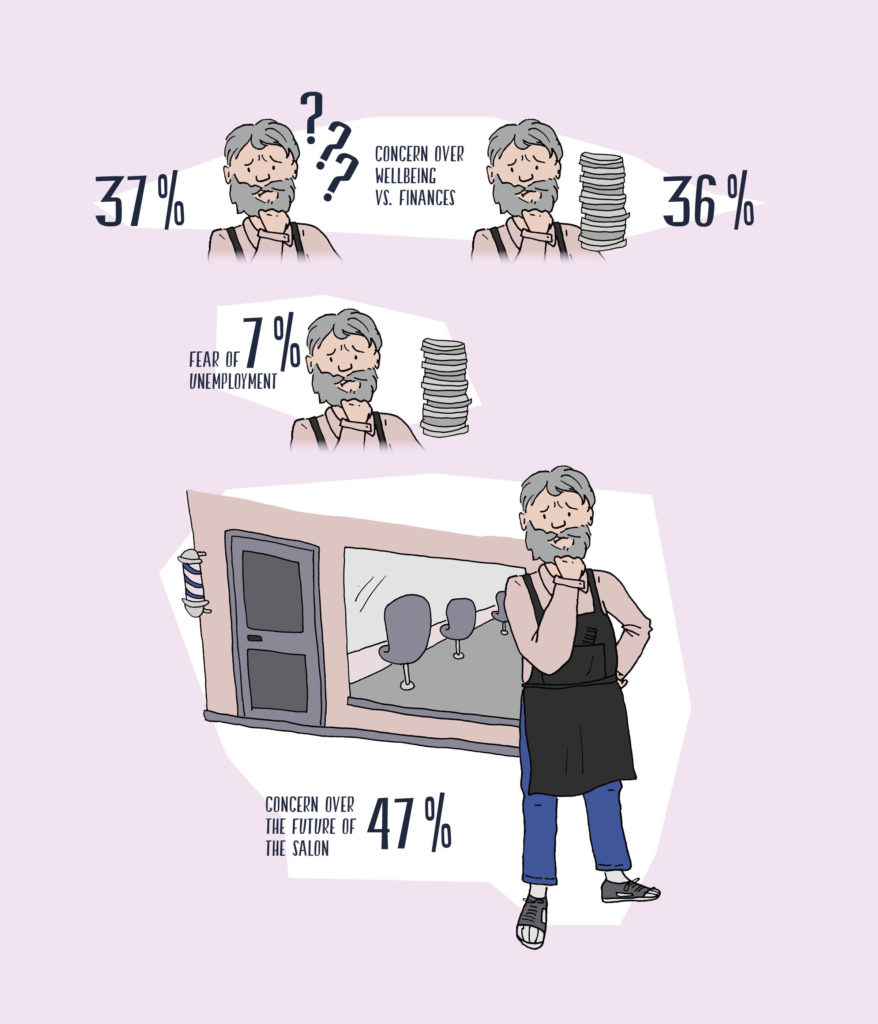
Despite the pandemic, nearly three in four predict a positive future for their salon, and nearly 50% predict an excellent future! Less than one in ten have a negative view of the future. Stylists who had used their time during the pandemic to develop their business operations by means of digitalization services had a more positive view of the future than the average. Salons that had started selling products in a webshop or increased their digital marketing also had a more positive assessment of the future than the average.
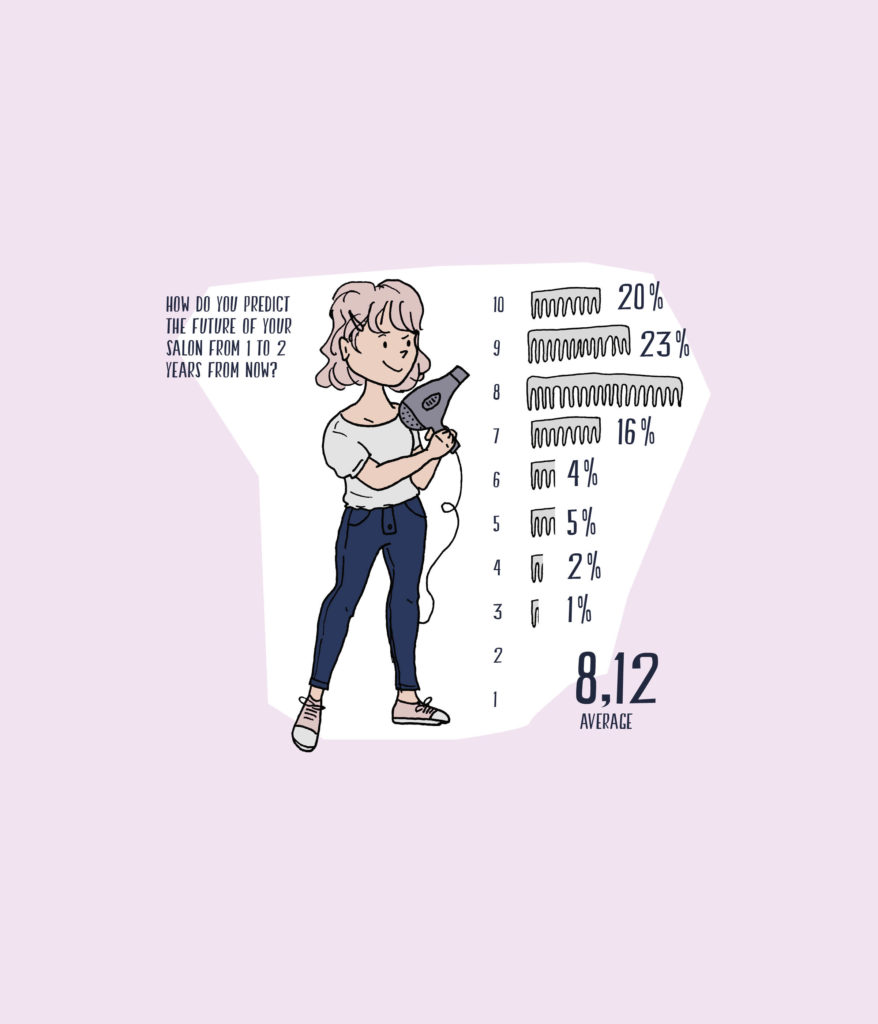
SURVEY:
The survey was conducted by Miraculos Oy/Four Reasons. The survey form was shared on Facebook in two groups for stylists. The survey period was June 12–21, 2020. The results were analyzed by Senso Research Oy. N=499



